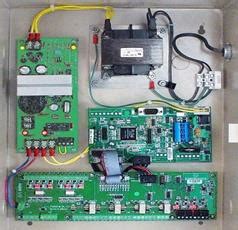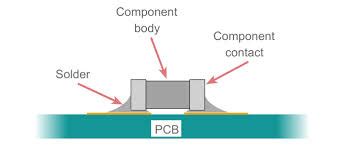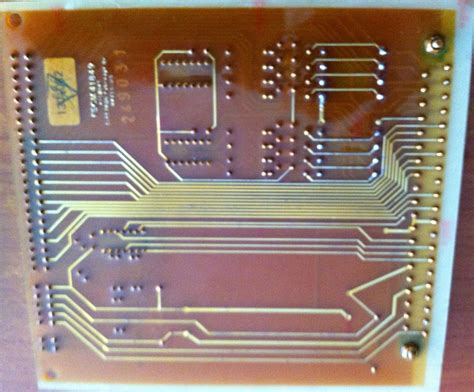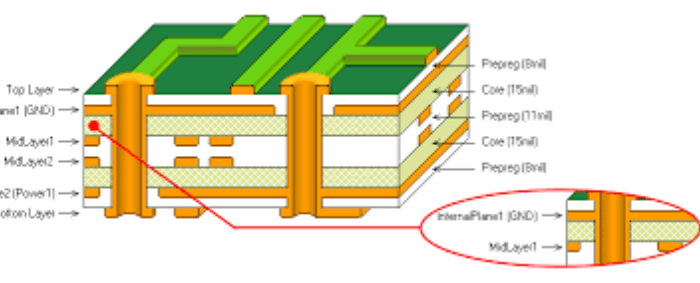Mastering Advanced Circuits Assembly for Cutting-Edge Innovation
Key Takeaways
Mastering advanced circuits assembly requires a solid understanding of the fundamentals of pcb assembly, as well as the latest techniques and tools used in the field. Essential to the process is the knowledge of how to effectively utilize pcba practices that enhance circuit performance. By delving into these topics, practitioners can learn best practices in circuit assembly and testing, ensuring that they adhere to industry standards for quality and reliability. Moreover, staying updated on innovations in circuit design is crucial, as current trends can drastically change the landscape of circuit design. Understanding how to troubleshoot common issues during advanced circuits assembly not only improves efficiency but also mitigates risks associated with electronics assembly. Furthermore, implementing robust safety protocols is vital for protecting both personnel and equipment during the pcb assembly process. Through case studies highlighting successful implementations, readers will gain insights into practical applications of these concepts, fostering a deeper comprehension of what it takes to thrive in this dynamic field.
Understanding the Fundamentals of Advanced Circuits Assembly
Advanced circuits assembly is a pivotal component in modern electronics. At its core, it involves the intricate process of creating printed circuit boards (PCBs) through methods that ensure functionality and efficiency. A fundamental understanding of this assembly process begins with the recognition of the critical elements involved, such as substrate materials, conductive traces, and component placement. A well-assembled PCB not only supports electronic components but also influences the overall performance and reliability of the final product.
In leveraging pcb assembly techniques, one must familiarize themselves with essential tools. Soldering irons, pick-and-place machines, and reflow ovens are indispensable in creating high-quality pcba solutions. Each tool plays a vital role, from initial development to final testing stages.
Furthermore, knowledge of circuit design fundamentals aids in weaving together these components effectively. As circuits become increasingly complex with more sophisticated functionalities, ensuring proper layout design becomes critical to avoid issues like signal interference and thermal management problems.
“A sound foundation in advanced circuits assembly sets the stage for innovation that defines modern technology.”
Creating a holistic understanding of these concepts will not only facilitate improved outcomes in circuit performance but will also open doors to further innovations within the field.
| Key Components | Description |
|---|---|
| Substrate Materials | Basis for circuit traces and support |
| Conductive Traces | Pathways for electrical current |
| Component Placement | Arrangement affects performance |
By mastering these fundamentals, engineers can significantly elevate their proficiency in advanced circuits assembly and contribute to cutting-edge technology development effectively.
Essential Tools for Circuit Design and Construction
In the domain of advanced circuits assembly, having the right tools is paramount for achieving successful outcomes in both design and construction. At the heart of this process lies PCB (Printed Circuit Board) assembly, also known in industry parlance as PCBA. The choice of tools can significantly influence the efficiency and accuracy of circuit designs. Essential instruments include high-precision soldering stations, which offer controlled heating and prevent damage to delicate components, alongside automated pick-and-place machines that enhance the speed at which circuits are assembled.
Moreover, a reliable design software suite is crucial for circuit simulation and layout creation; tools like Altium Designer or Eagle can help engineers visualize their concepts before committing to physical production. A robust testing platform also plays a vital role, enabling thorough assessments of circuit functionality prior to deployment. Emphasizing quality in your selection of tools not only streamlines the assembly process but also contributes to higher performance and reliability in your final product.
Utilizing these essential tools not only aids in reducing errors during pcba but also facilitates innovative solutions that can meet modern technological demands. In conclusion, investing time into understanding and acquiring these pivotal resources can empower engineers to master complex circuits, paving the way for breakthroughs in circuit design and implementation.
Techniques for Enhancing Circuit Performance
To achieve optimal functionality in advanced circuits assembly, several techniques can be employed to enhance circuit performance significantly. One fundamental approach involves the use of high-quality pcb assembly components that not only ensure reliability but also reduce noise interference. Engaging in proper layout design is crucial; creating a clean schematics work helps minimize inductance and capacitance, thereby enhancing signal integrity. Utilizing pcba testing methods such as Automated Optical Inspection (AOI) allows engineers to identify potential flaws during the assembly process, ensuring that each circuit operates at its peak efficiency. Additionally, the implementation of thermal management techniques, like incorporating heat sinks and thermal vias, can prevent overheating, which is vital for maintaining the longevity of electronic components. Integrating advanced materials in the assembly process can also significantly elevate performance levels; materials like low-loss dielectrics and high-speed conductors facilitate better signal propagation. Lastly, optimizing for manufacturability during the design phase ensures that circuits are not only efficient but also cost-effective to produce, bolstering innovation in the field of electronics.
Best Practices in Circuit Assembly and Testing
When working with pcb assembly, adhering to best practices in circuit assembly and testing is essential for ensuring both reliability and performance. One of the foundational steps in the pcba process is maintaining a clean workspace, as contaminants can lead to significant issues down the line. It is also crucial to follow a systematic approach during the assembly phase, including meticulous documentation of each step and ensuring that components are placed accurately according to the design specifications.
Moreover, utilizing quality soldering techniques and equipment can vastly improve the durability of joints, reducing the likelihood of failures due to thermal or mechanical stress. Testing is another vital aspect; implementing both functional testing and visual inspection throughout various stages of assembly can help in identifying potential problems early. For example, employing automated optical inspection (AOI) systems can quickly detect misaligned components or soldering defects that manual checks might miss.
Finally, conducting environmental testing—such as thermal cycling and humidity tests—can ensure that your assembled circuits will perform reliably under various real-world conditions. By integrating these best practices into your workflow, you set a strong foundation for achieving innovation with advanced circuits assembly, ultimately leading to robust design solutions that meet today’s technological challenges.
Innovations in Circuit Design: Trends and Future Directions
The rapid evolution of technology has significantly impacted the landscape of advanced circuits assembly, particularly in the realm of pcb assembly and pcba. As we look ahead, several key trends are shaping the future of circuit design. Firstly, the integration of Internet of Things (IoT) capabilities into circuit assemblies is becoming increasingly essential, allowing for smarter and more connected devices. This shift necessitates innovative approaches to circuit design, ensuring that assemblies can handle complex functionalities while maintaining efficiency.
Moreover, the movement toward miniaturization is pushing designers to explore new materials and techniques that allow for smaller, more powerful circuits. Innovations such as flexible circuits and 3D printed components are gaining traction, offering exciting possibilities for circuit configurations that were previously unimaginable. Coupled with advancements in manufacturing technologies, these trends enable designs that not only meet current demands but also anticipate future challenges.
Furthermore, there is a growing emphasis on sustainability within electronics assembly. Manufacturers are increasingly focusing on eco-friendly practices in the production of PCBs, opting for recyclable materials and energy-efficient processes. This not only meets consumer demands for sustainable products but also aligns with global environmental goals.
In conclusion, as we navigate these trends in advanced circuits assembly, it is paramount for industry professionals to stay abreast of these innovations—ensuring their design techniques are aligned with the future direction of electronics, thus fostering continued progress in technology and its applications.
Troubleshooting Common Issues in Circuit Assembly
When embarking on the journey of pcb assembly or pcba, it is crucial to be prepared for the common challenges that arise during the assembly process. One of the most frequent issues encountered is the misalignment of components, which can lead to faulty connections; this often stems from improperly configured assembly equipment or human error during manual assembly. Another prevalent problem is soldering defects, including cold solder joints or excessive solder, which can affect electrical conductivity and reliability. To mitigate these issues, it is important to implement thorough inspection protocols at each stage of assembly. Utilizing modern advanced circuits assembly techniques, such as automated optical inspection (AOI) and X-ray inspection, can greatly enhance quality control measures. Additionally, ensuring that your team is well-trained in both the mechanical and electrical aspects of pcba can minimize mistakes. Regular maintenance and calibration of tools and machinery also play a pivotal role in preventing equipment-related malfunctions that could disrupt production. By actively engaging in these troubleshooting strategies, practitioners can address challenges head-on, ensuring that their circuits not only function as intended but also contribute to the innovative solutions driving today’s technology forward.
Safety Protocols and Risk Management in Electronics Assembly
In the realm of advanced circuits assembly, the implementation of safety protocols and effective risk management is paramount to ensure successful outcomes and to mitigate potential hazards during the process. As professionals engage in pcb assembly or pcba, they must adhere to established procedures that prioritize both personal safety and the integrity of electronic components. Key practices include conducting thorough risk assessments prior to starting any project, which helps identify potential pitfalls and inform decision-making throughout the assembly.
Protective gear, such as antistatic wrist straps, safety glasses, and gloves, should be routinely worn to safeguard against electrical shocks and static discharge, which can damage sensitive components during pcb assembly. Additionally, ensuring that workspaces are well-ventilated can reduce exposure to harmful fumes emitted during soldering processes.
Moreover, comprehensive training programs should be established for all team members involved in the process of pcba, fostering a culture of safety awareness. By regularly updating training materials and providing hands-on workshops focused on proper techniques for handling components and tools, manufacturers can greatly decrease the likelihood of accidents. As innovation continues in circuit design, remaining vigilant about evolving safety standards is crucial for maintaining a secure working environment and ensuring high-quality outputs in circuit assembly projects.
Case Studies: Success Stories in Advanced Circuits Implementation
The implementation of advanced circuits assembly techniques in various industries has produced remarkable success stories that demonstrate their impact on innovation and efficiency. For instance, a leading telecommunications company adopted pcb assembly methods to streamline its product development process. By employing pcba strategies, they reduced production costs by 30% while enhancing the functionality and reliability of their devices. Another notable case is in the medical device sector, where advanced circuits assembly played a crucial role in developing a life-saving monitoring system. By utilizing precise circuit design and robust testing protocols, engineers were able to create a device that provides real-time health data, significantly improving patient outcomes.
In the automotive industry, advanced circuits have revolutionized vehicle diagnostics and safety systems. Through innovative circuit assembly practices, manufacturers were able to integrate sophisticated sensors and algorithms into vehicles, enhancing both performance and driver safety. These examples highlight not only the versatility of advanced circuits but also how they can be leveraged across sectors to achieve impressive results. As organizations continue to embrace these cutting-edge innovations, the successes witnessed can serve as inspiration for others aiming to master the complexities of circuit design and build resilient solutions in their respective fields.
Conclusion
In summary, mastering advanced circuits assembly is pivotal for engineers and enthusiasts eager to push the boundaries of electronics design. As we have explored throughout this article, effective pcb assembly requires a blend of robust techniques, essential tools, and a keen understanding of the complexities involved in pcba. The journey does not end with mere assembly; continuous innovation and adaptation to evolving technologies play a critical role in enhancing circuit performance. Whether it’s implementing cutting-edge design principles or adhering to established best practices in circuit testing, embracing these elements is crucial for achieving success in advanced circuits assembly. By analyzing case studies that highlight successful implementations, professionals can draw invaluable lessons to apply in their own projects. This knowledge forms a solid foundation that equips individuals to tackle future challenges and seize new opportunities within the dynamic world of electronics, ultimately driving forward the wave of innovation that shapes our technological landscape.
FAQs
What is PCB assembly?
PCB assembly, or pcba, refers to the process of assembling electronic components onto a printed circuit board (PCB) to create functional electronic devices. This involves several steps, including soldering components onto the board, testing for functionality, and ensuring that the assembly meets industry standards.
What are the common techniques used in PCB assembly?
Common techniques in pcba include surface mount technology (SMT), where components are mounted directly onto the surface of the PCB, and through-hole technology, where leads of components are inserted through holes in the board. Both methods have their advantages, depending on the application and required performance.
What tools are essential for circuit design and construction?
Essential tools for circuit design and construction include soldering irons, multimeters, oscilloscopes, and various types of software for circuit simulation and schematic design. Proper tools are crucial for ensuring precision and efficiency during pcb assembly.
How can I enhance circuit performance during assembly?
Enhancing circuit performance can be achieved through careful selection of components, proper layout design to minimize interference, and adhering to best soldering practices. Ensuring thermal management is also essential for maintaining optimal performance.
What safety protocols should I follow during electronics assembly?
It is important to follow specific safety protocols like wearing protective gear (gloves, goggles) when handling equipment. Additionally, implementing safe practices during soldering processes can reduce risks associated with fumes or electrical hazards.
For more information regarding advanced circuits assembly, please click here: Andwin PCB Assembly






